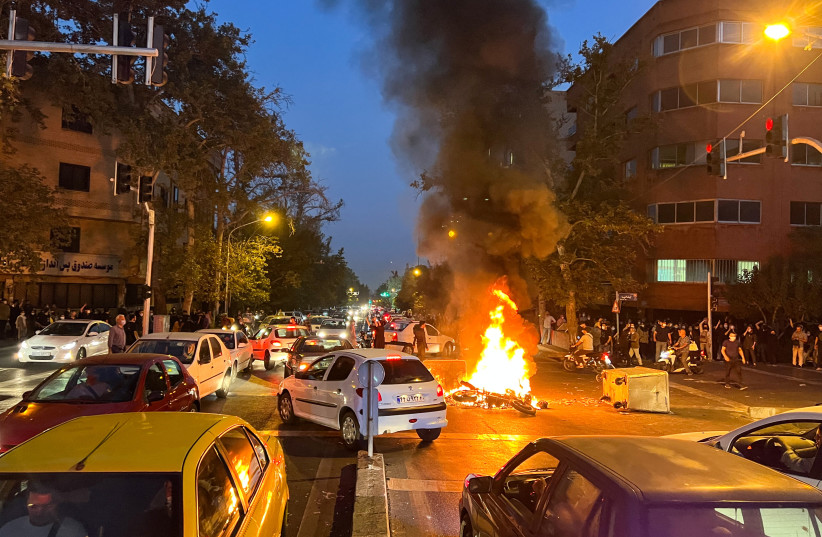Iran has seen protests in cities and towns over the past four days in the wake of the police killing of a young woman.
The protests began in western Iran in the Kurdistan region of the country, but they have spread to Tehran, Mashhad and other cities in the last two nights. The protesters have been seen clashing with police and plainclothes security, and also gathering in large numbers. In many cases, women have been at the forefront of the protests.
These are different than the 2019 large-scale demonstrations, in which Iran’s security forces are accused of killing 1,500 people; and in 2009, when there were massive protests across Iran. The 2009 rallies were a response to election fraud during the election of Mahmoud Ahmadinejad. protests erupted in 2017 driven by economic anger. Another massive wave of protests took place in 2019.
This time it is different, being driven by anger over the regime’s treatment of women, particularly the police detaining and then killing Mahsa Amini.
A Kurdish woman, Amini was detained while on a trip to Tehran, accused by police of not covering her hair in the manner the theocratic regime desired. She was then beaten, fell into a coma, and died last week. The regime has tried to calm crowds, claiming the death was an accident and that she died of heart failure or a preexisting condition. But what caused her death was the police detention.

The protests began in the Kurdistan region of Iran, where minority Kurds have faced oppression for decades. This gives the protests two overlapping causes: the suppression of women, and the suppression of minorities. The protests reveal the degree to which people despise the regime, and are willing to take to the streets to show their anger.
A number of videos posted online reveal the depth of this anger. In one, young men confront police on the streets as women are heard cheering from balconies. In another, crowds chant “death to the dictator.”
On Keshavarz Boulevard in Tehran, one man said that many of the intersections in the city are full of demonstrators. He also shouts pro-Kurdish slogans. For Kurds the two issues are entwined. A strike in the Kurdish region and videos of security forces shooting and beating people have shown the degree to which the regime faces major challenges controlling parts of the country.
Nevertheless, the regime will likely put down the protests as it has in the past. But the brief freedom that people have enjoyed in the streets, particularly at night, is a freedom they won’t forget. Images and videos posted online show women dancing, and in one widely shared video, a woman is seen cutting her hair as men cheer.
These are attempts to carve out a temporary freedom in the streets usually controlled by the regime, a regime that sentences women to prison and beatings for not covering their hair or for dancing. The things that Westerners take for granted are revolutionary acts in Iran.
On what other issues do Iranians go out and protest?
Over the last decade, Iranians have taken to the streets to confront the state over a variety of issues, from elections to the economy, to police brutality and suppression of minorities. When one adds up the long list, it is clear that the regime has only a tenuous grip on the country. It is confronted at every corner by large numbers of citizens who hate the leadership, and only brute force and time keep the regime in control.
The ayatollahs benefit from other authoritarian countries being on their side because they don’t want to see their own rule challenged. Nor is there much outside support for Iranians from other countries in the Middle East, which are hesitant to support the protests in Iran out of fear that their own citizens might rise up.
Iran has hijacked Iraqi politics, is an ally of Syria and has Hezbollah loyalists in Lebanon; and the Gulf countries don’t want to see chaos in Iran spill over. That means the people of Iran are largely alone. They have received some recognition abroad, in the US and Europe, but even there they face an uphill struggle because the Iranian regime is attending the UN, while the people rise up.
The key question facing the protesters is whether these demonstrations will grow outside of the Kurdish region and Tehran. For now, it is unclear if that is possible. On Tuesday night more cities appeared to join the protests, but that may be temporary.
